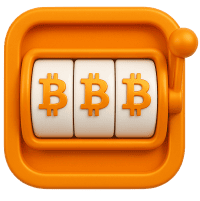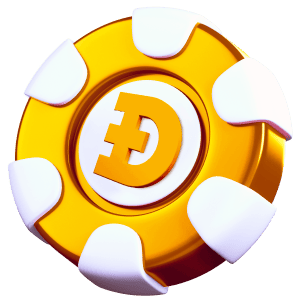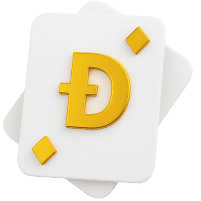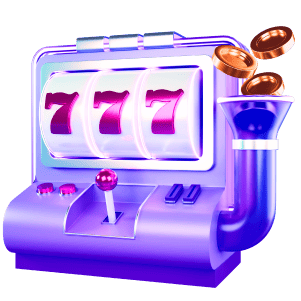
Cryptocurrency technology is not standing still. Cryptocurrency is becoming legal in more and more countries, which leads to a growing number of users. With the emergence of new cryptocurrencies there is a need for their fast exchange. Special exchanges are designed to solve the problem. There are centralised (CEX) and decentralised (DEX).
DEX platforms allow users to trade cryptocurrencies without the participation of intermediaries. At the same time, a high level of liquidity, anonymity and security is maintained. DEX Crypto Platforms provide clients with a high level of anonymity and security of funds, as the exchange itself does not access the assets of clients.
How a decentralised exchange works
Decentralised cryptocurrency exchanges (DEX) are cryptocurrency trading platforms that are independent of a central governing body. DEX platform operates based on blockchain technology – a distribution network without centralised governance. All platforms that provide transactions without additional control and transfer money to exchanges are included in the DeFi segment.
DEX crypto platforms are managed using smart contracts. That is, they operate in automatic mode. Participants of the project community or its developers can monitor the fulfilment of smart contracts and full operation of the service. In this case, the exchange is considered semi-automatic, as there is minor third-party intervention.
Most DEX trading platforms have a rather modest functionality. Their main task is to search for offers to buy and sell cryptocurrency, corresponding to the user’s request. In the interface of the exchange, the user specifies which tokens he is ready to buy, how many and at what price. The exchange analyses the offer and searches for suitable requests from other users who are ready to sell the same number of coins and at the price specified in the request. Next, the exchange of tokens is carried out.
On the DEX platform, the process of asset trading can be conducted in one of three scenarios:
- Offline. In this case, only the final result of the transaction is recorded inside the blockchain.
- Inside the blockchain. In this case, detailed information about the transaction – request, buy/sell or cancellation of the transaction – is entered into the decentralised registry.
- Automated Market Maker (AMM). If this format of operation is supported, the exchange does not have an order book, and all transactions are carried out using a liquidity pool.
Some DEX platforms provide clients with additional opportunities to earn money. For example, there is the possibility of staking. The client contributes part of his funds to the balance of the exchange, providing it with a certain reserve of coins. For this, users receive a percentage. Depending on the terms of staking, frozen assets can be withdrawn at any moment or after a certain time.
Advantages and disadvantages of decentralised exchanges
DEX crypto platform has both strengths and weaknesses. Let’s talk about the pros and cons in detail.
Pros
- Anonymity. You do not need to register an account and pass verification on the DEX platform. It will be enough to link your cryptocurrency wallet. This makes the exchange an ideal choice for those who value privacy.
- Security. The risk of hacking the exchange and stealing the user’s funds is eliminated. All cryptocurrency is stored not in the account of the exchange, but on the balance of the user’s cryptocurrency wallet. The presence of smart contracts makes the exchange automatic, which eliminates the possibility of manipulation of transactions.
- Full control over assets. On decentralised exchanges, the user has full control over his funds. He decides when and how to conduct transactions, which reduces the risk associated with centralised platforms.
- No middlemen. On a DEX platform, there are no regulatory bodies that set exchange rates. Users trade with each other without outside control. This makes the process more free and independent.
Minuses
- Less liquidity. DEX projects can have less liquidity compared to regular exchanges. This sometimes leads to slow and expensive transactions.
- Difficulties of use. DEX platforms are not suitable for beginners, as you need to have basic knowledge of cryptocurrencies and smart contracts to make transactions. Not all projects offer a clear interface, as well as the possibility of translation into other languages.
- Limited functionality. DeFi projects are gradually expanding their functionality, but in some cases they lose to centralised exchanges.
How a decentralised exchange differs from a centralised one
Centralised exchanges (CEX) have a key difference from DEX – the presence of management, which is responsible for all processes in the work of the platform. The quality and features of the services provided depend on the development team.
A vivid example of a CEX exchange is Binance. The functionality of the portal includes:
- control of compliance with the terms of the transaction;
- protection of personal data of clients;
- saving the history of operations.
Also, the team of developers and specialists is responsible for decisions that affect the further development of the project.
DEX-projects have no control from the authors of the project. The work processes are the responsibility of the programme (smart contract). This management format has a number of strengths, including:
- there is no need to trust the administration, as the workflow is the responsibility of the algorithm, not people;
- an automated transaction process;
- no need to collect personal data.
But the most important difference, which was mentioned at the beginning, is that all funds are stored in the users’ account, not the exchange’s. This protects assets from the risk of being stolen.
Liquidity of assets on DEX exchanges
The very concept of ‘liquidity’ implies the ease of exchanging one asset for another. The higher the liquidity indicator, the fairer the price of the asset, as the value of cryptocurrency is calculated based on the balance of supply and demand.
If the liquidity is low, there may be problems with the exchange of this token. The main reasons are that the cryptocurrency is not available for sale or the volume that is available for purchase does not correspond to the number of coins in the application.
To solve such a problem, DEX platforms attract liquidity providers. These are organisations or users who are willing to make their assets available for exchange. This is not on a free basis. For providing cryptocurrency, users receive passive income. It is formed by the commission that customers pay during the transaction. Also, the exchange itself can issue its own token and use it to pay additional remuneration.
How the liquidity pool works on DEX exchanges
Knowing the demands of the market and the peculiarities of their clients, the creators of the exchange can accumulate reserves for each coin. Such reserves are called a liquidity pool. If we consider the issue from a technical point of view, it is a smart contract that allows users to store their assets on a special account.
For each coin, a separate liquidity pool is created. This approach allows for smooth trading of different pairs. For example, BNB/USDC, ETH/BTC and others.
To make the funds in the liquidity pool work, the AMM protocol is used. This allows trading on the exchange without using an order book. This format provides high liquidity even for those pairs, which have a weak demand on conventional exchanges. This is due to the fact that it is easier to find the right number of coins in reserve than a seller willing to part with the required volume of tokens.
AMM fulfils two important functions:
- forms and utilises liquidity pools for rapid exchange;
- Provides incentives for asset providers to provide their coins to the pool.
It was the emergence of liquidity pools that provided DEX projects with the ability to trade smoothly and quickly, as it was possible to do away with third-party intermediaries.
Some decentralised exchanges work on orderbook. This is not the most popular solution, as such projects do not use liquidity pools, but build their work on the direct sale and purchase of assets. Users themselves create orders to buy and sell, and the exchange brings together similar clients to carry out the exchange operation. Clients’ assets, as in CEX, are stored on the wallet of the exchanger. The user has access to the functionality of entering assets into the exchanger and withdrawing them.
The reason for the scarcity of such solutions is the lack of liquidity and the difficulty of providing it. There is a risk that users will have to wait a long time for their orders to be executed. Only a large number of users who use the service to create exchange orders can fix the problem. But there are few projects that actually work.
Most decentralised exchanges work on AMM. The user does not contact specific sellers when requesting an exchange. The request goes to the liquidity pool, which already holds the assets of dozens of clients. This makes it possible to make instant transfers and use the exchange at the fairest price.
How liquidity provision works
Liquidity Providing ( LP) is a new way of passive earning offered by DEX platforms to their clients. Users earn income by transferring assets into a liquidity pool. When a user makes such a transfer, LP tokens are credited to their balance. Each coin is equal to a certain share in the total pool.
It is the LP tokens that allow the client to retain control over the assets. If necessary, the tokens are transferred back to the pool and the client receives his assets in return.
The creation of LP tokens was a necessity for the normal functioning of decentralised exchanges. Without them it is impossible to form liquidity pools, which in turn will not lead to smooth trading. For providing assets for liquidity, users are rewarded by the exchange.
The distribution of tokens within Liquidity Providing programmes is fair and quite clear. The programme determines how much the user contribute and how much reward they should receive. If, for example, a user deposits 25,000 with a total pool of 100,000, the user has to transfer 25% of the total amount of LP tokens. The coins themselves act as a guarantee that decentralised exchanges provide to customers. The received tokens can be transferred or placed in other protocols.
Conventionally, earning on providing liquidity can be compared to a bank deposit. The client transfers his assets for a certain period of time for use, and in return receives remuneration as a percentage of the deposit amount.
It is important to note that when creating a liquidity pool, the user must own each of the assets. For example, for the BTC/ETH pair, it is necessary to contribute to both one part of the pool and the second part. Each exchange sets its own terms of remuneration, so they can differ significantly.
Note that liquidity pools, as well as other financial instruments of earning, are not without risks of losses. If during the time of freezing assets, the price of cryptocurrency will fall, the payment of commission for the use of funds may not be enough to cover losses from the decline in the value of assets in the portfolio.
Top 3 best decentralised exchanges
A large number of DEXs, their constant updating and the emergence of new projects, makes it difficult for users to choose the best platform. For you, we have prepared a list of the three most popular projects, their pros and cons.
Biswap
Biswap operates on the Binance Smart Chain blockchain. The portal offers not only token exchange, but also the possibility of farming, earning from providing liquidity and other types of cryptocurrency investments. Users can participate in lotteries with valuable prizes, an affiliate programme and other activities are available. Due to the high popularity of the project, it is profitable to invest in Biswap token. The more customers the exchange has, the higher the value of the asset will be.
Pros:
- low commissions;
- there are limit orders and leveraged trading;
- it is convenient to work with BEP-20 tokens;
- fixed staking.
Minuses:
- Only one blockchain network;
- geographical restrictions for a number of regions.
Curve
This is the optimal solution for traders who work with stablecoins. Curve has separate solutions for this type of assets. The exchange operates on an AMM protocol built specifically with traders in mind. If a user delivers funds into liquidity through Curve, they are rewarded with a CRV token.
Initially, the exchange specialised in trading equivalent assets, with the largest pools of stablecoins and pools of wrapped BTC and ETH. In 2021, the project expanded its functionality.
Pros:
- simple smart contracts;
- less risks due to more stable pairs;
- low commissions;
- support for a large number of networks.
Minuses:
- Liquidity return risks;
- Ethereum commissions fluctuations;
- complex interface.
Uniswap
Uniswap was one of the first decentralised crypto exchanges, so its place on this list is not surprising. An automated market maker is responsible for the interaction of trading participants and creating market liquidity. At Uniswap, the AMM protocol works on the basis of the Ethereum blockchain. It can be used to exchange tokens between networks, create and manage liquidity pools, add and withdraw funds. For some transactions, customers receive rewards in UNI token.
Uniswap has a floating fee. The lower the liquidity of a pair, the higher the commission. The cost of a transaction ranges from 0.3% to 1. In total, there are more than 1,500 pairs for exchange on the portal.
Pros:
- automatic exchange with a large trading volume;
- complete anonymity of clients;
- support for ERC20 tokens;
- open source code;
- NFT support.
Minuses:
- commission up to 1% on low-liquidity pairs;
- support for Ethereum-based tokens, others are not supported.
Conclusion
Decentralised exchanges are platforms where clients can make peer-to-peer transactions without additional intermediaries and in automatic mode. Here, you won’t need to provide your data to third parties, as well as pay extra commission to intermediaries.
The functionality of crypto exchanges differs noticeably, but in general they provide the following services – exchange of tokens between different networks, provision of funds to liquidity pools, and pharming. To work with DEX, you don’t need to register and go through verification. All you need to do to make transactions is to add your cryptocurrency wallet and then confirm transfers in it.
Answers to common questions
What is a decentralised exchange?
A decentralised cryptocurrency exchange is a cryptocurrency trading platform that operates without intermediaries and centralised management.
What are the advantages of a decentralised exchange?
The three main pros of DEX projects are anonymity, security and independence from third parties.
How do smart contracts work on decentralised exchanges?
Smart contracts on DEX automatically execute transactions between users based on predetermined conditions. When one user places a buy order and another places a sell order, the smart contract ensures that the transaction is executed at the set price.
Are there any risks in working with a decentralised exchange?
Some platforms do not provide a helpdesk, so there is no mediator to resolve disputes between users. The second risk is the vulnerability of smart contracts if they are not properly verified. The risks include the fact that once a transaction is created through a smart contract, it can no longer be cancelled.
Do I need to set up special wallets to trade on DEX?
Yes, you will need a cryptocurrency wallet compatible with the platform to trade on decentralised exchanges.
What can I replace the DEX platform with?
An alternative to a decentralised exchange could be a CEX exchange. If privacy and flexible exchange conditions are important to you, you can use P2P transfer platforms.





























